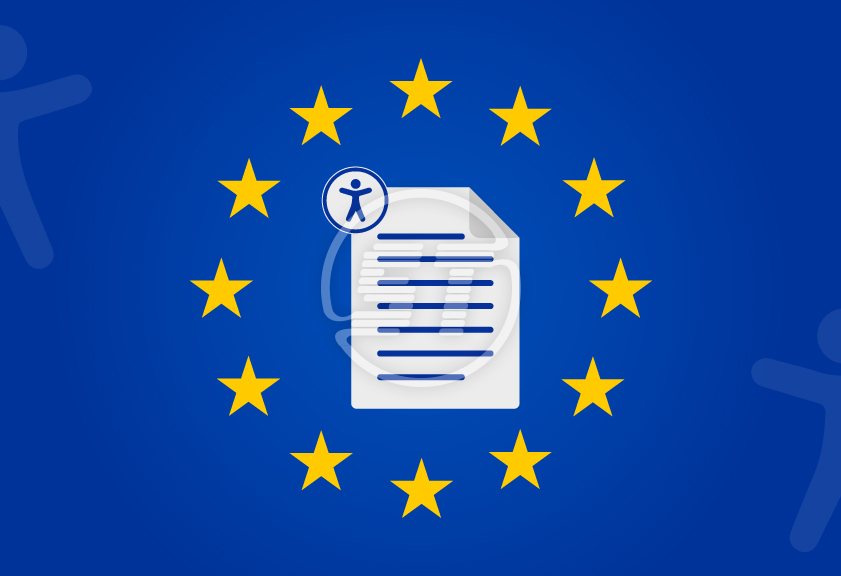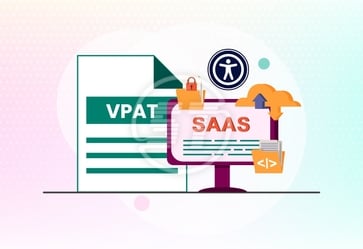The European Accessibility Act (EAA) requires businesses and organizations operating within the EU to ensure that their digital products and services are accessible to people with disabilities. One of the most visible and practical steps toward EAA compliance is publishing a clear and comprehensive website accessibility statement. The accessibility statement does not only demonstrate commitment to inclusivity but also ensures legal alignment with the EAA’s requirements.
This guide will cover most of the important details about an EAA-compliant website accessibility statement.
What is a website accessibility statement?
A website accessibility statement is a public declaration that outlines:
- The level of accessibility compliance a website aims for.
- Any known accessibility limitations.
- The measures taken to improve accessibility.
- A clear way for users to contact the website admin if they encounter barriers.
Accessibility statement serves as a transparency tool, demonstrating to visitors (and regulators) that accessibility is a priority and that organizations are committed to ongoing improvements.
Why accessibility statements matter under the EAA?
The European Accessibility Act mandates that businesses - especially those providing digital services like ecommerce, banking, media, and telecommunications - must meet accessibility standards, and the deadline to implement EAA was June 28, 2025.
Part of this obligation involves informing users about accessibility measures in place. And thus, accessibility statement is needed to fulfil EAA compliance requirement.
A well-drafted accessibility statement:
- Demonstrates compliance with the EAA.
- Builds trust with users, including those with disabilities.
- Reduce legal and reputational risks.
- Encourages feedback that helps improve accessibility over time.
What are the crucial elements of an EAA compliant accessibility statement?
When creating a statement, ensure it contains the following essential sections:
- Introduction and commitment
Start with a clear commitment to accessibility and inclusivity. Example: “We are committed to making our website accessible to as many people as possible, regardless of technology or ability”.
- Compliance standard
Mention the standards that are essential for website compliance. Under the EAA, this is closely aligned with WCAG 2.1 Level AA, and WCAG 2.2.
- Accessibility features
Highlight specific accessible features that are implemented, such as:
- Text alternatives for images.
- Keyboard navigation support.
- High contrast options.
- Screen reader compatibility.
- Known limitations
Be transparent about areas that may not yet be fully accessible. For example: “Some third-party widgets may not meet accessibility standards. We are working with providers to resolve these issues”.
- Feedback and contact information
Provide users with a way to report accessibility barriers. Include:
- A dedicated email address.
- A phone number (with accessibility support if possible).
- A response timeframe commitment.
- Enforcement and complaints
Inform users about their rights under the EAA and where they can escalate complaints if issues are not resolved. This may include local or national enforcement bodies.
- Date of statement
Include the publication date and the last review/update date. Accessibility is an ongoing process, so regular updates are essential.
What are the best practices for writing an accessibility statement?
- Keep it simple
Avoid technical jargon or overly legal wording. The statement should be easy to read for people with different literacy levels, cognitive abilities, or non-native language backgrounds. Aim for clarity and empathy.
- Be honest and transparent
Don’t overstate the website compliance level. If some parts of a website are still being improved, acknowledge those limitations. Transparency builds trust and shows organizations are actively working toward better accessibility.
- Ensure the statement itself is accessible
The accessibility statement must follow accessibility principles. This means:
- Clear headings and structure for screen readers.
- Sufficient text contrast.
- Mobile-friendly formatting.
- Simple language for easy comprehension.
- Provide multiple contact options
Not all users can rely on the same communication channel. Offer at least two accessible options (such as email and phone) for feedback. If possible, add a web form with correct ARIA labels to make reporting easier.
- Commit to a response timeline
Clearly state how quickly the organization will respond to accessibility requests or complaints (e.g., within 5-7 business days). This shows accountability and builds confidence with users.
- Mention ongoing monitoring
Accessibility requires continuous efforts. Highlight that the website undergoes regular testing and updates to stay aligned with WCAG and EAA requirements.
- Include review and update dates
Always include when the statement was last reviewed and when it will next be updated. This demonstrates that accessibility is actively maintained rather than neglected.
- Reference official standards
Explicitly mention WCAG 2.1 Level AA (or WCAG 2.2 when applicable) as a guiding standard. This helps users, auditors, and regulators understand the compliance benchmark.
- Address third-party content
If a site uses external plugins, videos, or apps, clarify their accessibility limitations and what organizations are doing to resolve them. This sort of transparency is a key to EAA compliance.
- Make it easy to find
Place a link to the accessibility statement at a visible location – typically in the website footer. Users should not have to search for it.
Example template for an EAA-compliant accessibility statement
EAA Accessibility Statement
We are committed to ensure our website is accessible to as many people as possible. Our goal is to conform to the Web Content Accessibility Guidelines (WCAG) 2.1 Level AA, in line with the European Accessibility Act.
Measures taken
- “Alternative text for all meaningful images”.
- “Keyboard-friendly navigation”.
- “Support for screen readers”.
Known issues
Some third-party applications may not fully comply. We are working to resolve these issues.
Feedback
If you experience accessibility difficulties, please contact us at accessibility@example.com or call +XX-XXXX-XXXX. We aim to respond within 7 business days.
Enforcement
If you are not satisfied with our response, you may contact your national enforcement body.
Statement updated: September 30, 2025.
Also read: European Accessibility Act Fines for Non-Compliance
In a nutshell,
Creating an EAA-compliant website accessibility statement is more than a legal requirement - it is a commitment to making the digital world inclusive. By being transparent, proactive, and responsive, organizations can build trust with users, demonstrate compliance, and contribute to a more accessible digital ecosystem across the EU.
Looking to create an EAA-compliant accessibility statement that reflects true digital inclusion? Skynet Technologies provides expert accessibility remediation services aligned with WCAG and EN 301 549 standards. From audit to documentation, our team helps organizations across the EU meet EAA requirements confidently. Start your accessibility journey with a trusted partner today.


